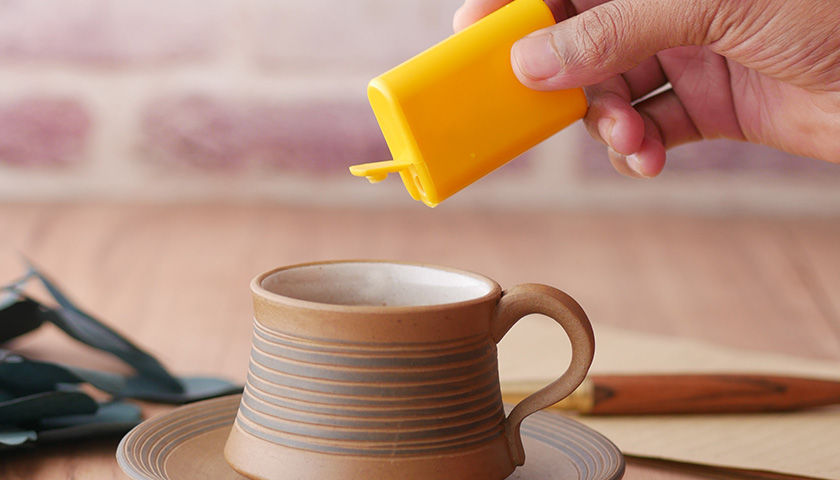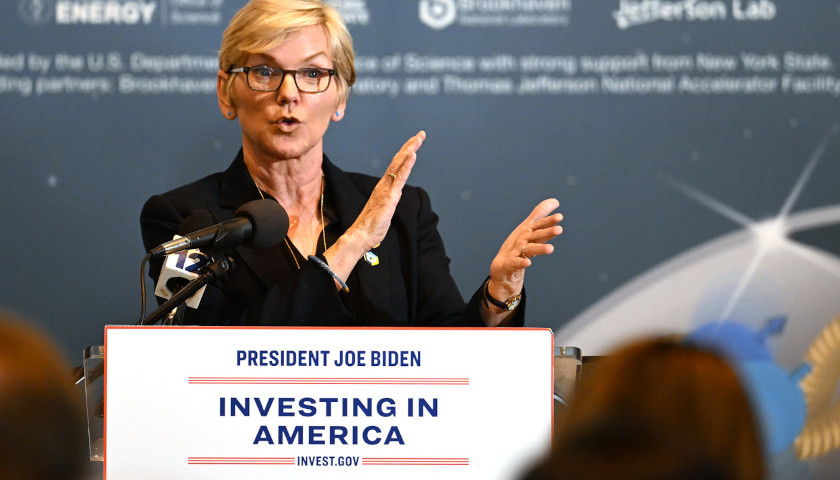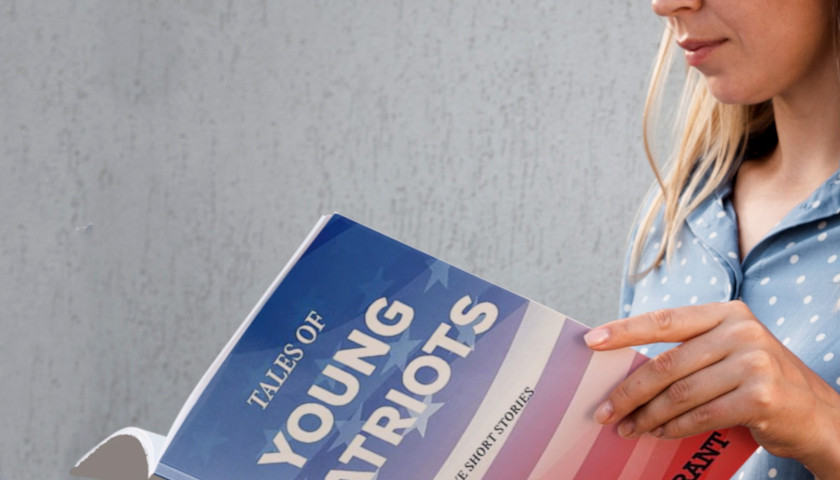by Michael Fumento
When I went back to the U.S. for the first time in several years last year, I made an incredible discovery. It’s called Sparkling Ice and is sold separately or in 12-packs of 17 ounces (curious size) and has a ton of flavors that mostly taste alike but taste very good. Sparkling ice contains the artificial sweetener sucralose and is also lightly carbonated (low carbon footprint!) so that I didn’t drink it like water; I essentially drank it instead of water.
But lo! Newsweek headline: “America’s Most Popular Artificial Sweetener Damages Our DNA, Scientists Say.” You know, like atomic bomb victims. The alleged result is a leaky gut, and you don’t have to know exactly what that means to know it’s probably not good. Except it may not even be real; but we’ll get to that.
So I quickly checked and my gut wasn’t leaking. And probably neither is yours, and if so it’s not from the sweetener to which the article refers, Splenda.
Generically named sucralose, scientists at the British company Tate & Lyle discovered it in 1976 and it has been approved for use in many countries around the world, including the United States, Canada, and the European Union. It’s in packaged food, ready-made meals, desserts, chewing gum, and most importantly beverages.
American consumers say Splenda accounts for the majority of the sweeteners they use, although that’s suspect in that since I usually don’t look at labels for the sweetener name. I’ll bet most people don’t. We do know that artificial sweetener use has been growing worldwide. And Splenda has an advantage over many competitors in that it’s quite heat-tolerant, meaning it can be used in baked goods whereas other sweeteners would break down.
The study cited in Newsweek (and numerous other publications) performed six analyses, of which all were en vitro. That means not human beings, not monkeys, not rodents, not even a fruit fly. It means test tubes, Petri dishes, whatever.
Conducted at the University of North Carolina and North Carolina State University, the study suggested that sucralose-6-acetate, an impurity formed during sucralose production, could break up DNA strands and cause other types of genetic damage. It also found that gut cells exposed to sucralose-6-acetate had increased activity in genes that could lead to oxidative stress, inflammation, and that dreaded gut leakage.
As it happens, though, “Leaky gut syndrome is a hypothetical condition,” according to the Cleveland Clinic, “not currently recognized as a medical diagnosis.” Whoops!
“It’s based on the concept of increased intestinal permeability, which occurs in some gastrointestinal diseases,” says the authoritative clinic. The concept of “increased” is important, because all of our guts leak since they’re supposed to. So “excess leakiness” is in the eye of the beholder and not necessarily the intestines. But to continue with the theory, the idea is that a leaky gut may lead to substances that would normally be flushed out of the body through waste instead going directly from intestines into the bloodstream.
Not exactly like my “leaky gut” during my first visit to the Iraq war, when a perforated bowel required a resection and a temporary colostomy bag. Yech!
But now my gut is fine and tells me there’s a lot more wrong here.
In addition to finding symptoms of an illness that may not exist, “The paper was all in vitro research and very weak evidence in the grand scheme of total evidence regarding the dangers of sucralose,” Joseph Zundell wrote in a recent Instagram post.
Granted that Instagram is normally my go-to place for cute animal videos, not medical information, but Zundell has other outlets and is legit. He has a doctorate in cancer biology from the University of the Sciences and The Wistar Institute in Philadelphia, and often comments on viral stories related to cancer and nutrition. He noted that a major issue was amounts, that people just don’t consume anywhere near the amount typically tested in laboratories, and as always the dose makes the poison.
Indeed, the main reason sugar substitutes are so desirable is precisely because so little goes so far. Splenda, specifically, is 600-times sweeter than sugar. So technically, it’s not zero calorie – except you couldn’t possibly consume enough from any source to add up to even one. The same goes for negative health effects. It’s just not possible to consume very much – even if you absolutely chug it like I was doing. (And would still be if it were available where I am now. Sniff, sniff.)
Naturally, any break-down product is going to be at a much lower level than the original product. In this case, sucralose-6-acetate has been found up to about 10% of the quantity of Sucralose in rodents. A tenth of very little is very littler.
The FDA has assigned an Acceptable Daily Intake number to sucralose, derived by determining the safe level and dividing by 100). Here it’s 5 milligrams per kilogram of body weight. That means if you weigh 150 pounds, you can eat 340 milligrams or the amount in 28 packets of Splenda, every day. Even my Sparkling Ice binge took me nowhere near that.
And mind, if sucralose is your main source of artificial sweetener it’s almost certainly not your only source.
“Chemically [artificial sweeteners] are totally different,” says Alice H. Lichtenstein, professor of nutrition science and policy at Tufts University’s Friedman School of Public Health but somehow “the whole class of compounds get lumped together.” Consider lumping together fish with frogs or flies because none of them are mammals. Lichtenstein is also co-author of the American Heart Association’s position on low-calorie sweeteners, which states: “That said, some rodent studies have found that relatively low doses of sucralose do alter the gut microbiomes in rodents, which at least indicates the possibility of human gut leakage – whatever that is and whatever it does.”
But how about human studies? Non-furry bipeds.
A Canadian study published in 2020 did look at repeated daily oral intake of beverages sweetened with a pure powder of sucralose or aspartame in a double-blinded, randomized, crossover. That’s the gold standard; the same way potential drugs are evaluated. It found that daily oral consumption of “beverages sweetened with 136 mg/day sucralose or 425 mg/day aspartame did not measurably affect the gut microbiota in healthy participants.” Microbiota are interacting bacteria, archaea, bacteriophages, eukaryotic virus and fungi that help break down and draw nutrients from food in the gut. Meaning: “The doses of [artificial sweeteners] used in this study resemble an intake of approximately [a liter] of beverages per day.”
The non-industry sponsored study concluded: “Aspartame and sucralose did not cause measurable changes in the gut microbiota or SCFAs (short term fatty acids) after 14 days of a realistic daily intake in healthy participants.
But “Sugar-replacing sweeteners can’t catch a break,” began a recent article in BigThink. First it was aspartame, then it was sucralose, now it’s erythritol. One by one, a pesky study comes along and questions their safety.” It then went on to debunk an anti-erythritol study.
What’s going on here? Nutritionists just hate artificial sweeteners, almost in a religious way, observed a 2019 Washington Post article. To them, wrote Tamar Haspel, “Low-calorie sweeteners represent just about everything that’s wrong with our diet.”
“They’re mostly synthetic. They play to the human preference for sweetness, which manufacturers leverage to sell us more, and then more again. A good chunk of the research is industry-sponsored. And they’re mostly in highly processed foods — or, as [one nutritionist] puts it, “crap.”
The attack probably began before you knew artificial sweeteners existed, in 1906 with the first such, saccharin. It was back in 1906 and President Theodore Roosevelt, becoming something of a Teddy Bear by that point, put the kibosh on a proposed ban declaring, “Anyone who says saccharin is injurious to health is an idiot.” Bully!
But about 70 years later the saccharin attack was back. Studies linked the sweetener to bladder cancer in laboratory rats. The FDA wanted to yank it, but the public raised hue and cry because there were no substitutes. So Congress settled for a warning label. Later scientists found that humans metabolize saccharin differently from rats, that while it was still dangerous for Muppet Rizzo the Rat, it wasn’t for us. The warning label requirement was rescinded.
Still, the attacks on artificial sweeteners continue.
“The nutrition community doesn’t like diet soda. Of all the groups that make dietary recommendations, I can’t find one that lends full-throated support,” said Haspel.
“Limit low-calorie sodas,” says the American Heart Association, and “stick to water.” The Center for Science in the Public Interest says it’s “best to avoid” artificial sweeteners.” The Canadian dietary guidelines discourage them. The U.S. dietary guidelines are decidedly meh. Although added sugar is a top public health concern, diet soda is consistently met with something between distrust and hostility.
Haspel continues that “The recent literature is filled with laundry lists of hazards that look like this one , from Stanford professor of medicine Christopher Gardner, and also a co-author of the American Heart Association position:
Fostering a taste preference for sweet foods and beverages, making naturally sweetened foods less appealing, adversely altering feelings of hunger and fullness, reducing awareness of calorie intake, adversely altering gut microbiota, increasing glucose intolerance, substituting for healthier beverages, contributing to the perception that individuals can consume more calories from other foods, and contributing to the possible intake of other ingredients in LCS beverages that could be of concern such as caffeine and artificial colors.
Haspel says, “I asked him about those dangers, and the first thing he said was “none of them are proven.” Then he added, ‘it’s all plausible.’ When I told him my read is that the evidence was practically nonexistent, he nodded vigorously.”
I actually have sympathy with the general sentiment that low-calorie sweeteners represent much that is wrong with out diet. I’ve been writing about obesity since publication of my book, The Fat of the Land: The Obesity Epidemic and How Overweight Americans Can Help Themselves, 25 years ago. And while the U.S. is the fattest major country on earth it’s not just excess consumption of food per se, but highly processed foods.
Meaning? Well, an apple is unprocessed while apple sauce is mid-level and apple juice is highly processed. You just can’t eat enough apples to equal the calories in medium-sized glass of apple juice. I max out at two pieces of fruit at once, and rarely eat more than one. Our cave ancestors went through hell to get just a bit of sugar – or fat for that matter. Like robbing a beehive with no protection or chasing down a mastodon and hurling enough spears before it turned and chased them down.
Now it takes mere seconds to toss into your shopping cart a pastry that comprises fat and sugar with just enough refined grain to keep it together. Better yet, have it delivered.
So diet sodas and sugar-free flavoring seem to be a way of literally letting us have our cake and eat it too. Actually, the expression should be reversed but whatever.
If we stuck to unprocessed foods or even a mix of unprocessed and medium processed, we wouldn’t be the world’s tubbo capital – with U.S. life expectancy declining for the first time in our history. Reported COVID sickness would have been vastly lower.
But the rest of the world is following in America’s wake. Here in the Philippines, the norm among younger women now is the tubbomorph; by my repeated (admittedly non-scientific) counts, a stunning 80 percent are overweight, and occasionally obese. They treat 7/11 as a grocery store, and they have 7/11s like the U.S. has Starbucks. Even as it also has a lot of Starbucks, too. That’s as opposed to nearby countries where thin remains the norm, such as Vietnam, South Korea, and Japan. (And more so North Korea but that’s a different matter.) About 60 percent were overweight before lockdown but with nothing to do but stay home and eat (we were quite literally locked in much of the time) that’s what they did. Now that it’s “the new normal,” all the euphemisms have been hauled out such as “curvy,” “plus-sized,” and “chubby,” which we’re told “is “the new beautiful.” Most will never lose that weight.
Artificial sweeteners almost certainly play a role, and certainly there’s no good evidence that using sucralose et al. instead of sugar (more commonly in the U.S. high fructose corn syrup) is at all helpful in weight loss. Low-cal sweetener usage has gone up in tandem with the numbers on the national scale. So when Tate & Lyle claimed on the 40th anniversary of selling sucralose that they had removed “77 trillion calories from consumers’ diets globally” there is absolutely no support for that.
A lot is probably compensation, the “Double cheeseburger and tall fries with a Diet Coke” effect. Or it could be that artificial sweeteners make our sweetness threshold higher and so we crave sugar-based products. Or perhaps both or neither. But they certainly aren’t making us thinner on the whole, although we can’t rule out the possibility that they can aid on an individual basis. I’d say that if I had consumed sugar-sweetened beverages instead of my Sparkling Ice that would have been around 400 calories a day, meaning I would have gained a pound every 9 days. But I wouldn’t have, conscious that I didn’t want to gain a pound every 9 days.
So that’s my lecture. And you’re not going to listen to me, because you didn’t 25 years ago when I published my book.
I would just conclude by repeating we all need to be eating closer to nature until we can afford those nifty GLP-1 drugs you’ve heard about like Wegovy.
Meanwhile, there’s no reason to make artificial sweeteners the bogeymen. I’ve read the research and I want my Sparkling Ice!
– – –
Michael Fumento has been an attorney, author, and science journalist for over 35 years. His work has appeared in the New York Times, the Washington Post, the Sunday Times, the Atlantic, and many other fora. He’s hoping to get a complimentary lifetime supply of Sparkling Ice for writing this but very much doubts it.
Photo “Sweetener Being Poured Into Coffee” by Towfiqu barbhuiya.





